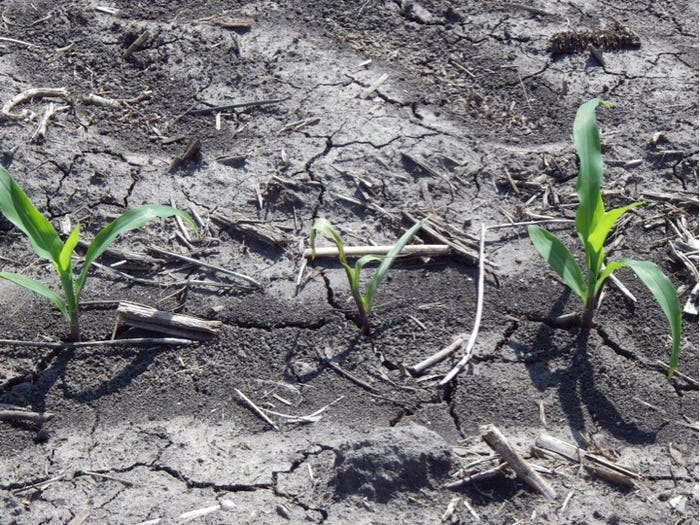June 3, 2017

Photo courtesy of ISU
Corn and soybean diseases need a susceptible host, a favorable environment, and a pathogen present, ISU Extension field crops pathologist Alison Robertson told a group of about 75 crop scouts at a workshop in mid-May. The diseases are recognized by corn or soybean plant symptoms—reactions of the host like wilt, leaf spots and cankers—and signs, observations of the pathogen itself or its parts.
“Scouts look for clues,” Robertson says. Growth stage, weather conditions, time of year and other factors can help narrow the decision in identifying a disease. The shape and color of a lesion then becomes key to identifying a particular disease.
Iowa State University’s pocket-sized “Corn and Soybean Field Guide” includes photos and descriptions of the most common corn and soybean diseases. Anthracnose leaf blight, gray leaf spot, common rust, southern rust, Physoderma brown spot, Holcus leaf spot, Goss’s wilt, smuts, stalk rots, root rots, and ear rots are included corn diseases. Soybean diseases included are bacterial blight, bacterial pustule, Phyllosticta leaf spot, Septoria brown spot, Cercospora leaf blight, frogeye leaf spot, mildews, alfalfa and soybean mosaics, soybean vein necrosis, tobacco streak, root rots, sudden death syndrome, brown stem rot, stem canker, white mold, charcoal rot, blights, and soybean cyst nematode. The handy guide includes photos of each disease, along with descriptive information, symptoms, environmental conditions favoring the disease, best time to scout, and scouting tips specific to that disease.
Weather conditions are telling—for instance, cool wet conditions promote northern leaf blight and white mold, but those diseases won’t appear in hot, dry conditions. “Remember the sun is your friend in disease ID, too,” Robertson told crop scouts. “Hold the plant up looking into the sunlight, so the sun backlights the lesion. That can make the colors and shapes more pronounced.”
“It can be really important economically to identify the correct disease,” Robertson says. “If you spray for a bacterial disease, like bacterial leaf streak, for instance, you’re just wasting your money.”
Robertson challenged crop scouts to identify about 20 of the most common corn and soybean diseases from photos of lesions. Here’s a sample of photos and descriptions of a few of the diseases that have more recently appeared in Iowa.
Check out other tips and tricks to scouting in Parts I, II and III of this series.
About the Author(s)
You May Also Like




